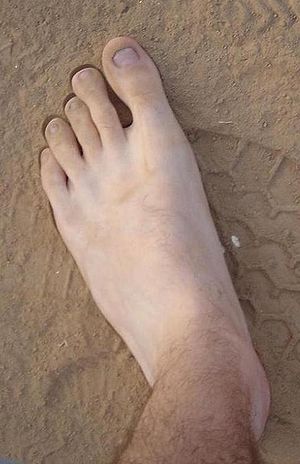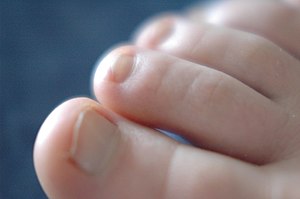 |
| Lateral view of the human ankle, including the talus (Photo credit: Wikipedia) |
- Pain and swelling in the heel area, and pain may be severe.
- Unable to bend foot downward.
- Inability to raise up on toes.
- Popping noise when injury first occurs.
Rupture of the tendon usually occurs near the point where the tendon attaches to the heel bone. Ruptures are most frequently caused by increase in physical activity, traumatic injury like falling high up or stepping into a hole.
Men between the ages of 30 and 40 present the greatest risk for Achilles tendon rupture. Also, the likelihood is increased if you participate in recreational sports that involve running, jumping and quick starts and stops. There are also certain types of medicines that can increase the risk of tendon rupture.
Because an Achilles tendon rupture affects your ability to walk, you should seek immediate treatment. Dr. Blaakman has certain tests he can perform to determine if it is your Achilles tendon and the degree of rupture. He may order additional tests like an MRI so he can view the extent of the damage. This is a painless test that creates a computerized image of the tissues in your body.
Both non-surgical and surgical treatment methods are common. Younger more active people may choose surgical repair to try to get back to their routine quicker, while older individuals may choose non-surgical methods. Non-surgical methods may work equally well, but probably take a bit longer to heal and run a greater risk of the injury recurring. You would be required to wear a boot or cast for a period of time while the tendon mended itself.
Surgical correction is done through an incision, whereby the tendon is sewn back together. As with any surgery, infection is a possible risk. Regardless of the treatment method, a rehabilitative time of 4-6 months is necessary during which time you will undergo muscle strengthening exercises and physical therapy.
Exercises that strengthen the calf muscles can help prevent a rupture. Also alternating activities to avoid overuse is important as well as gradual increase of duration and intensity of exercise. If you have tendonitis or an Achilles rupture, contact Dr. Blaakman at (877) 941-3338. Don’t wait for things to get worse. A little help from Dr. Blaakman and you’ll be right back up and running in no time.
References:
http://www.mayoclinic.com/health/achilles-tendon-rupture/DS00160/DSECTION=prevention






































